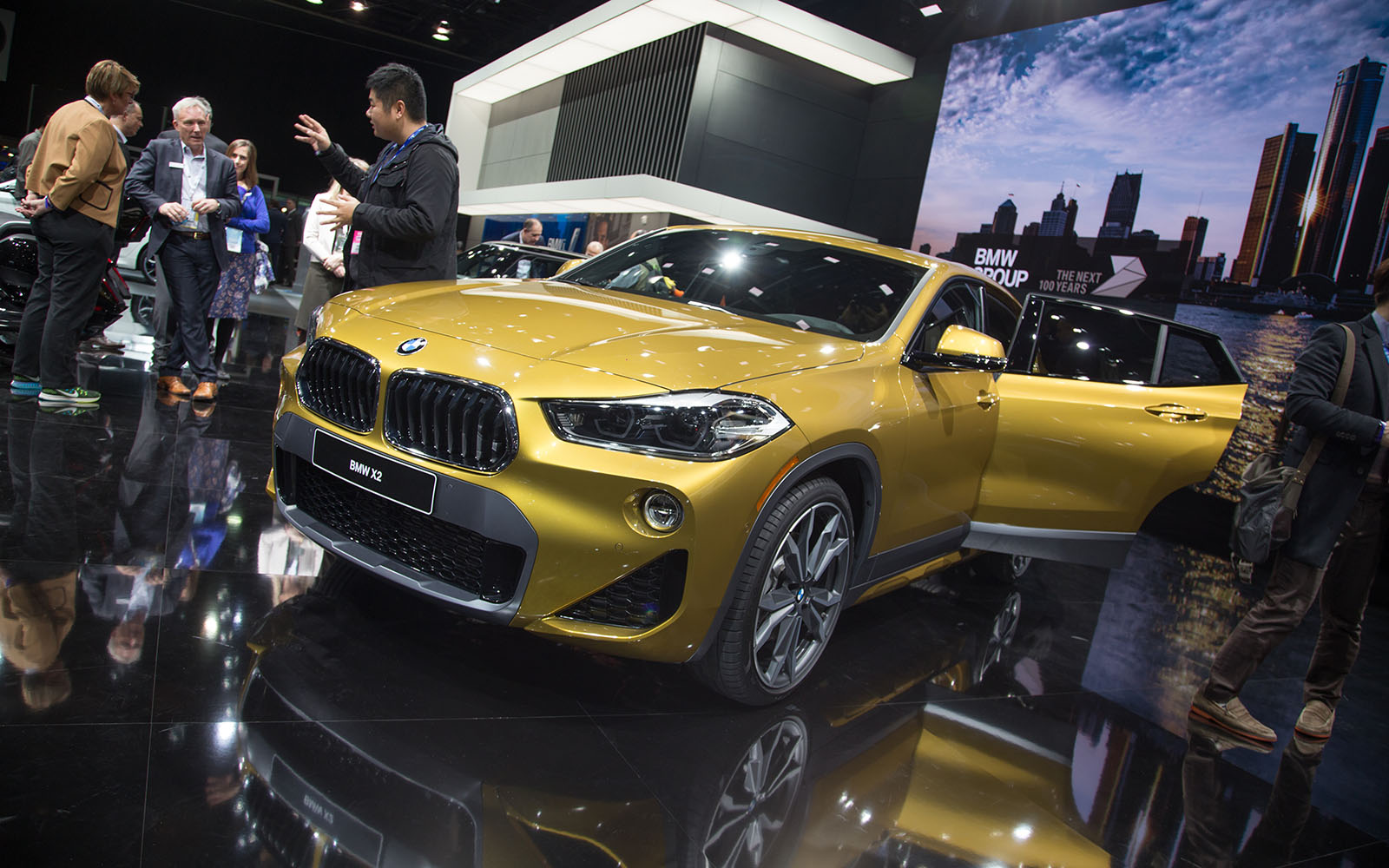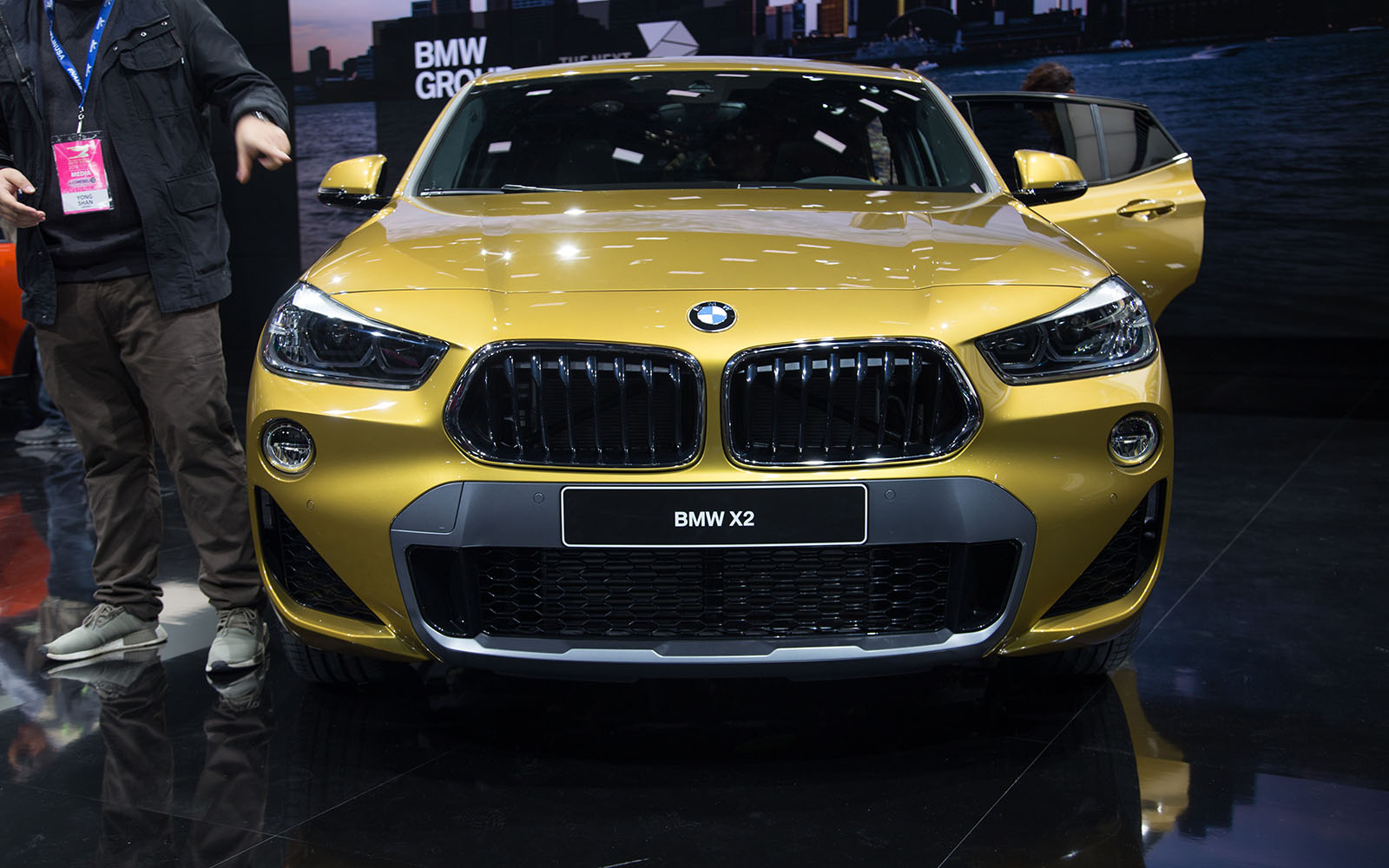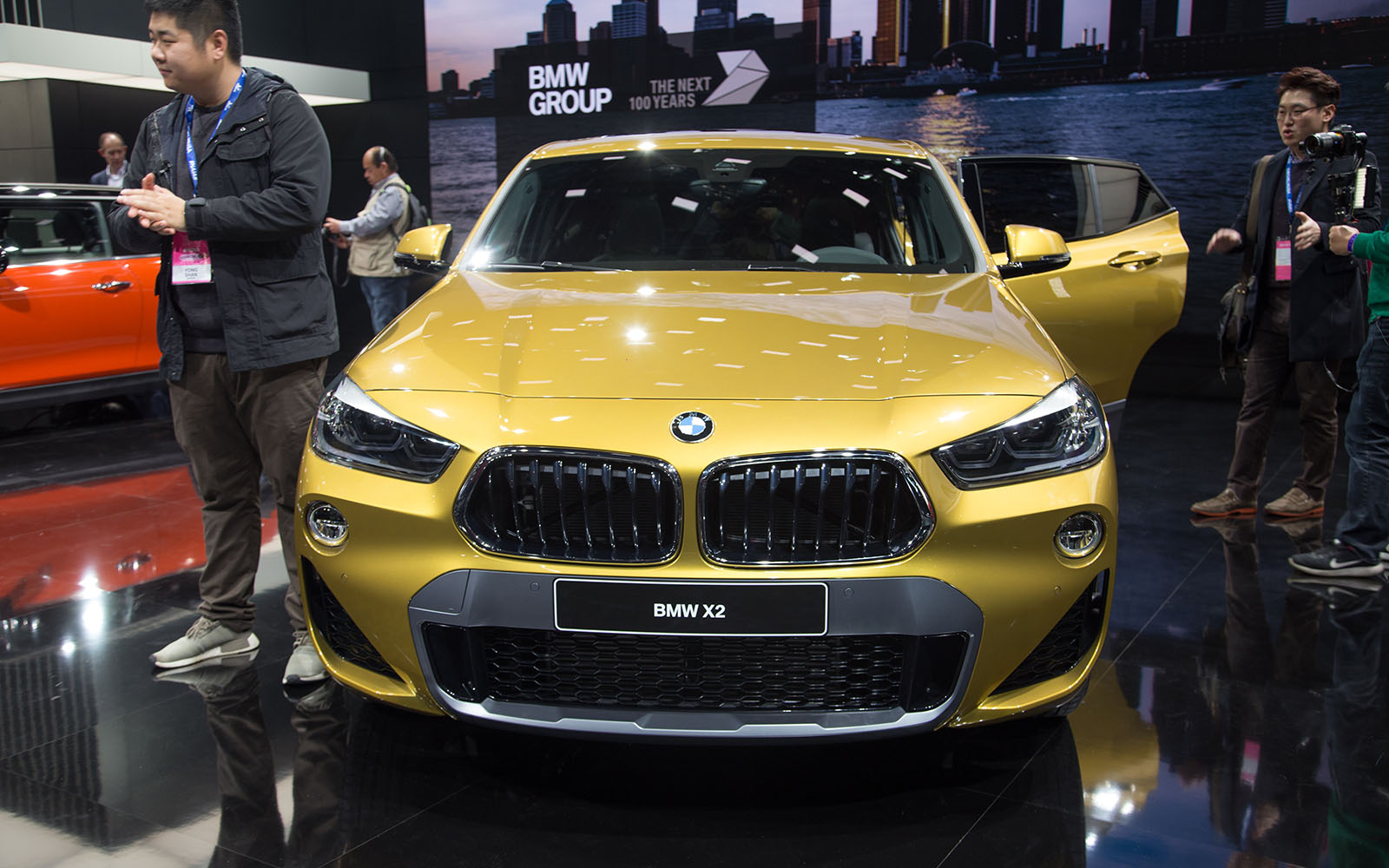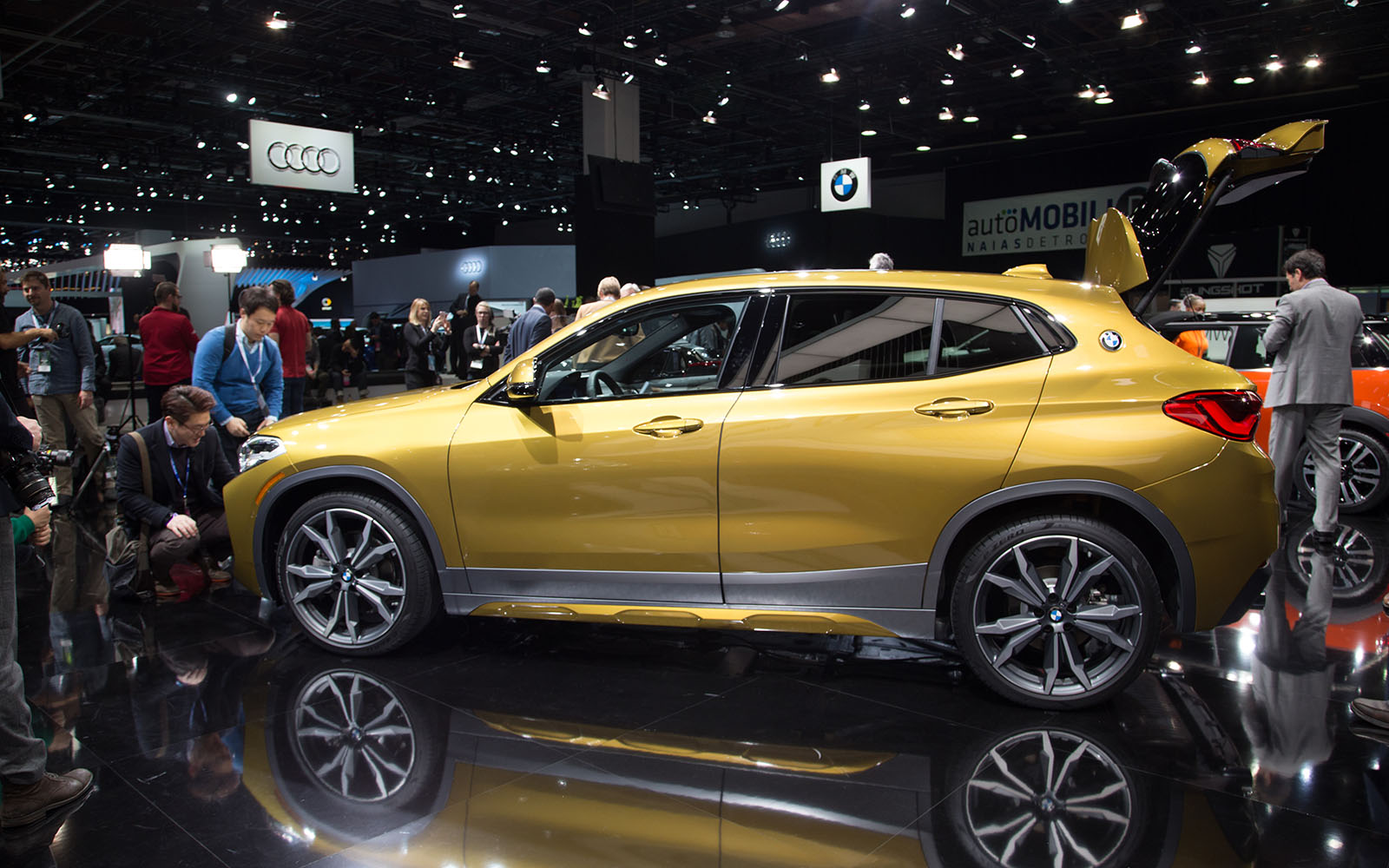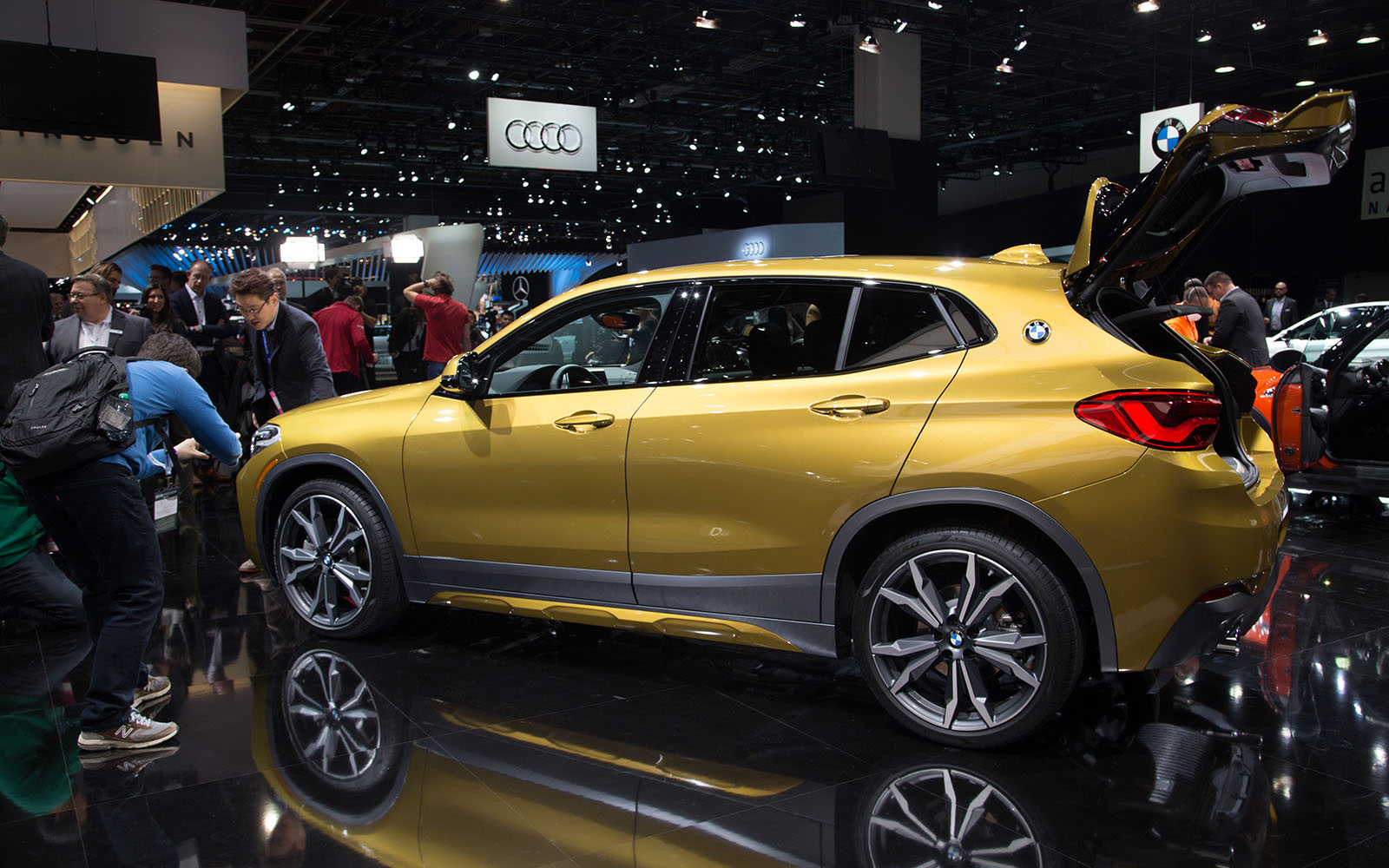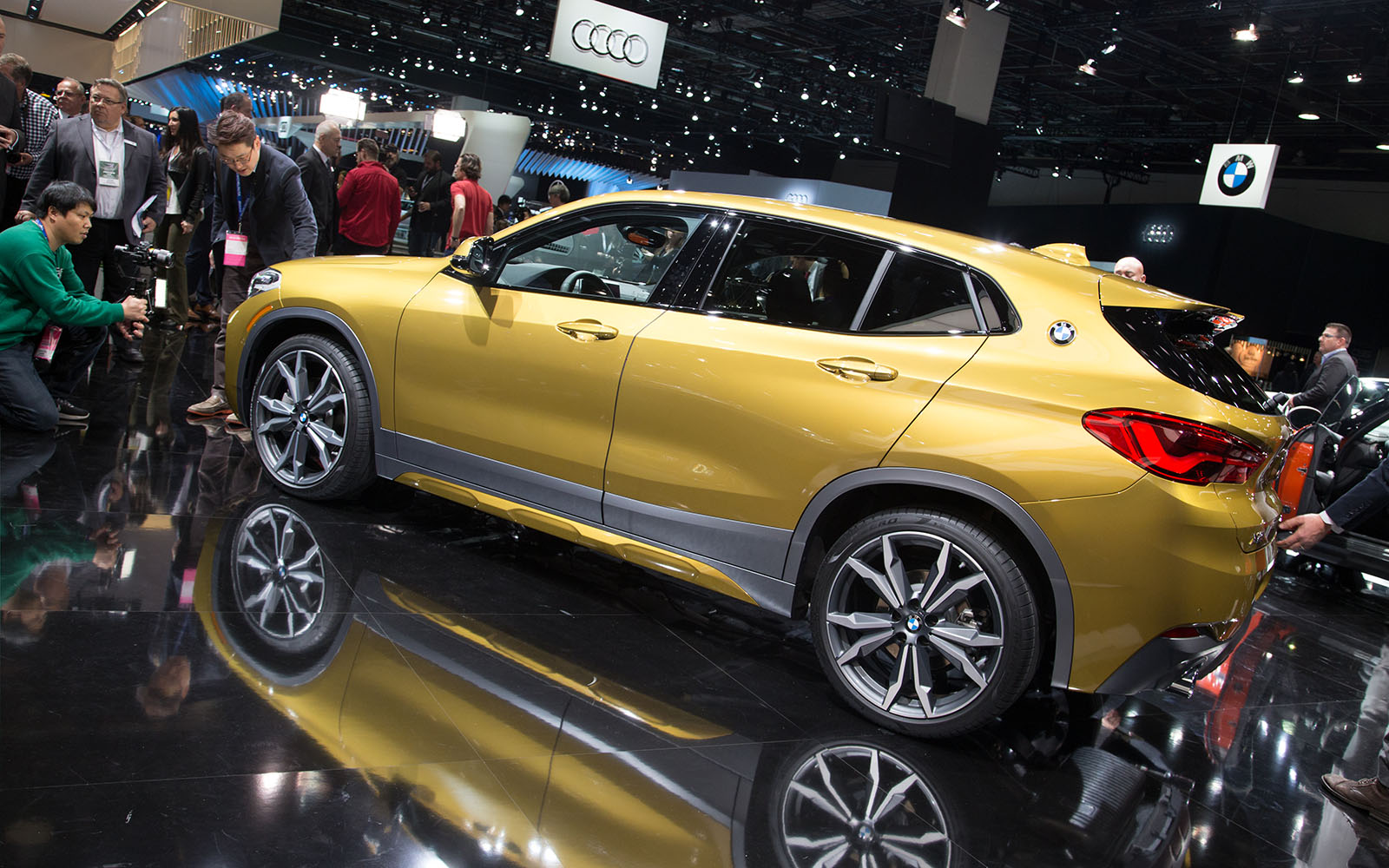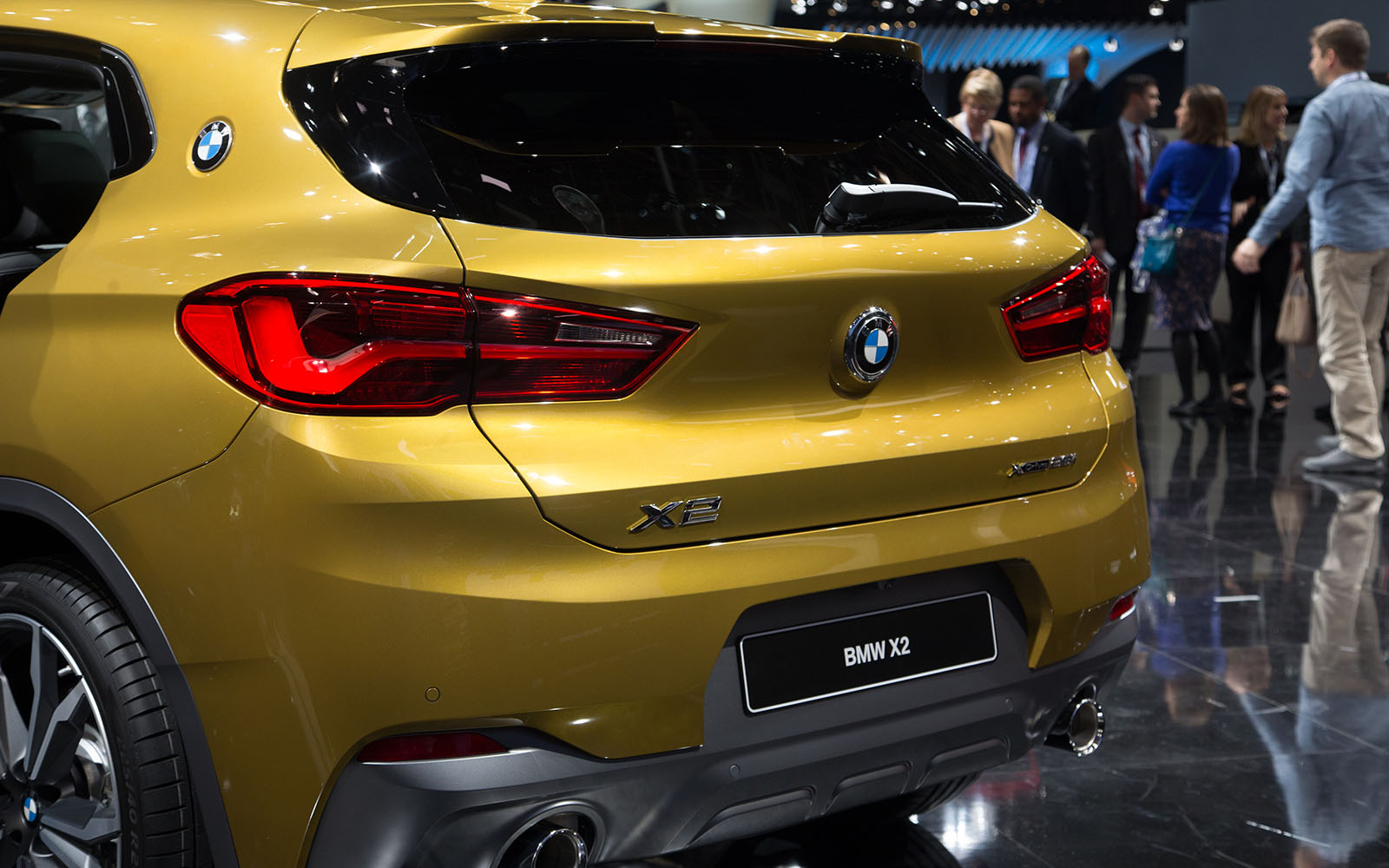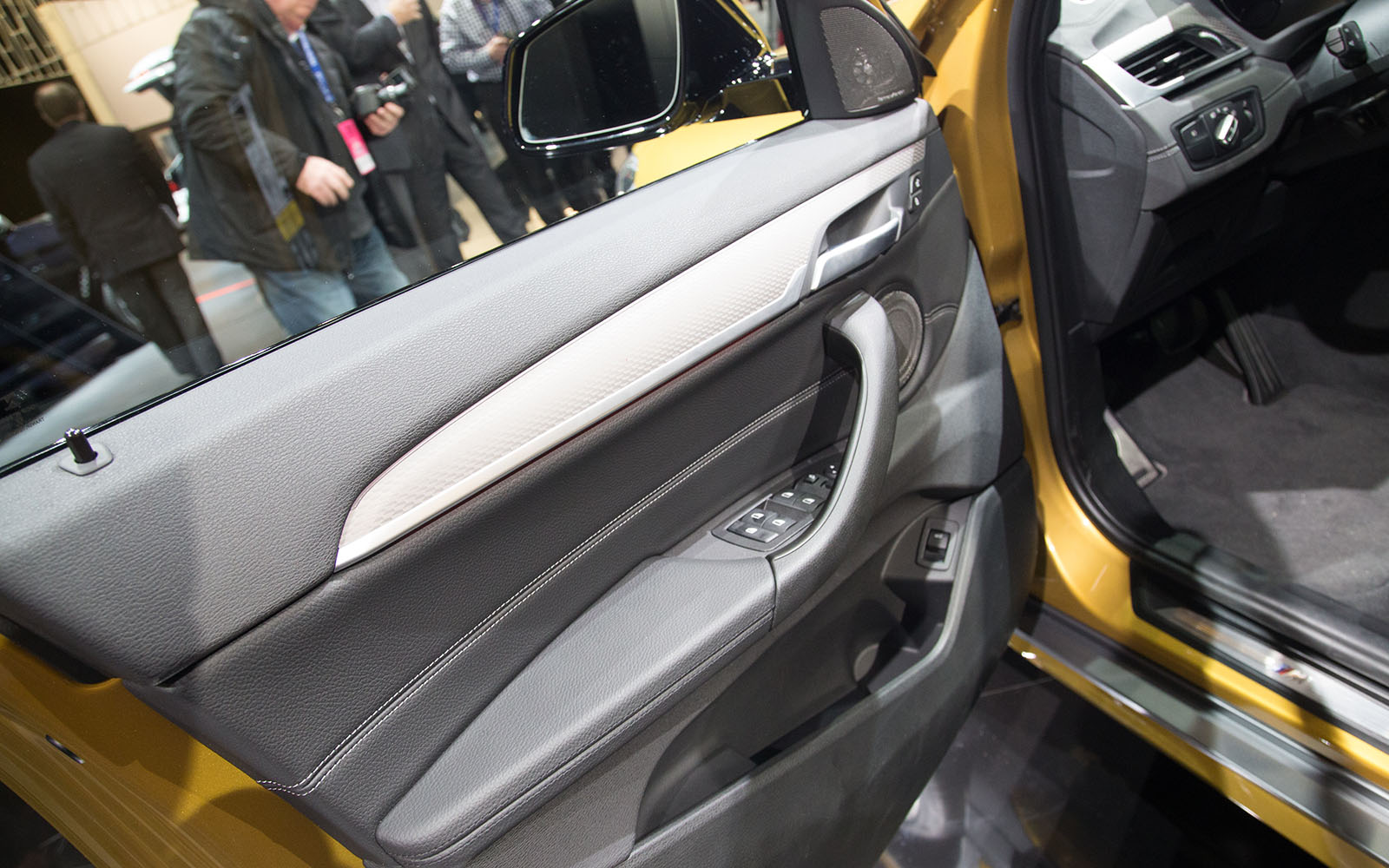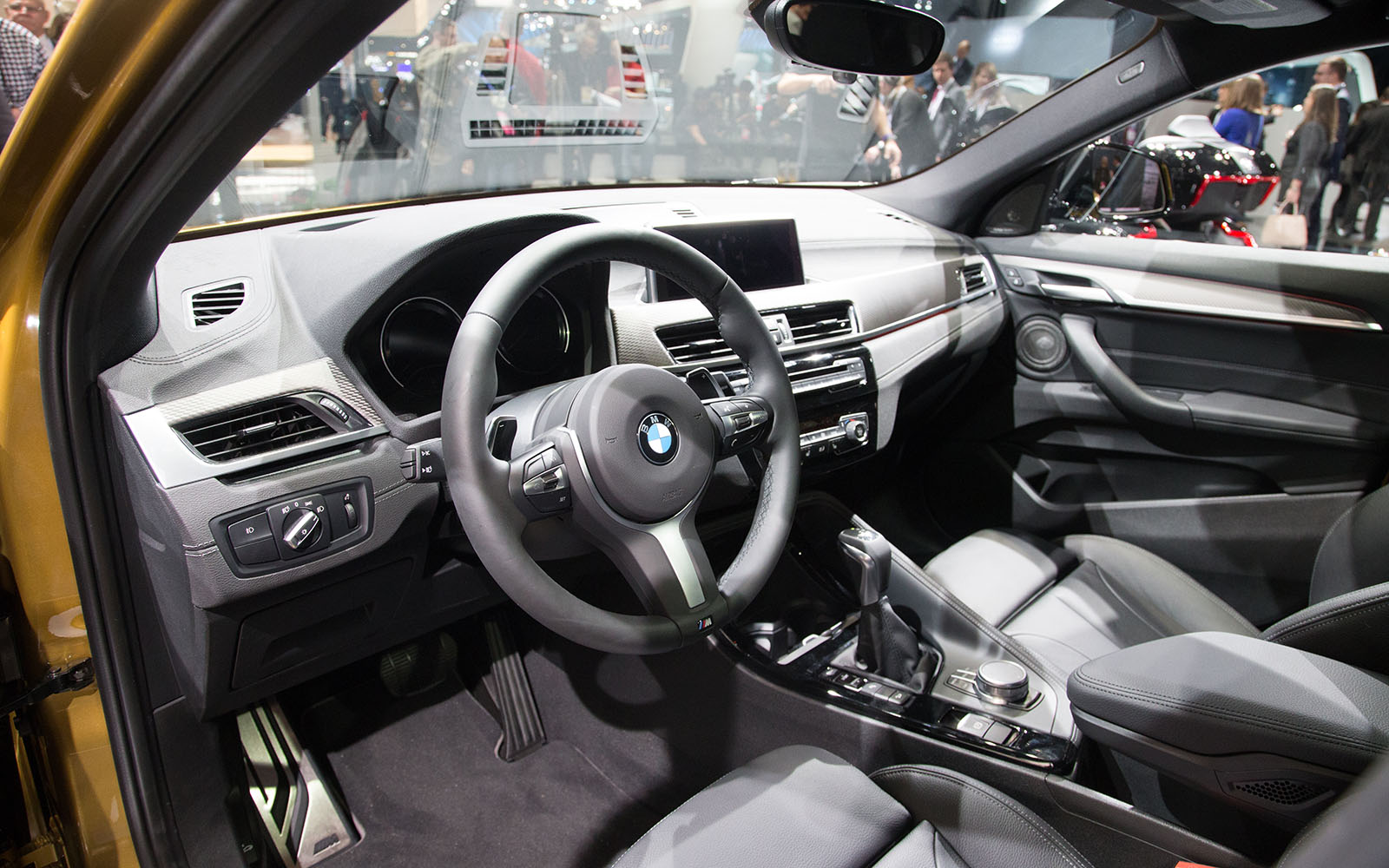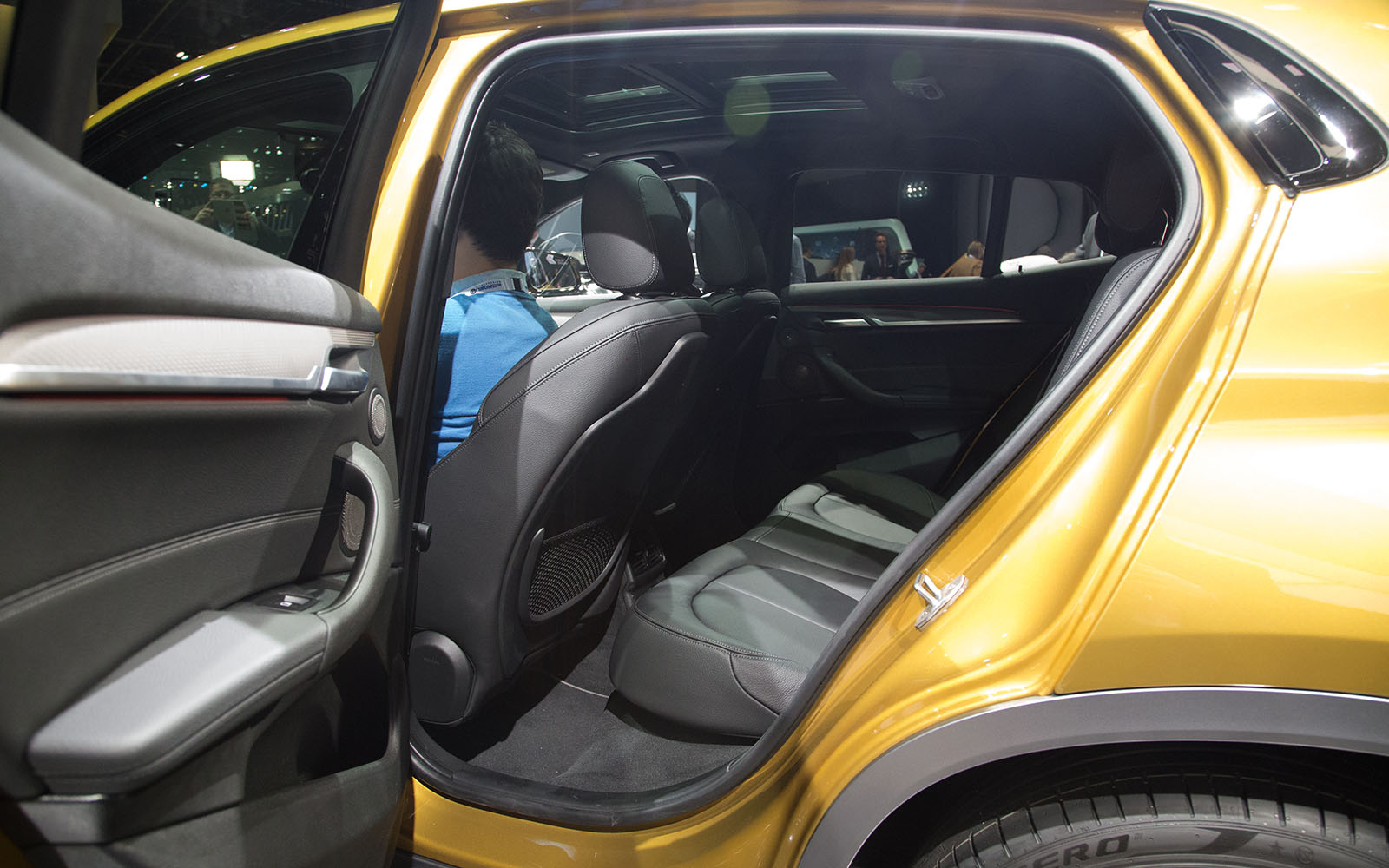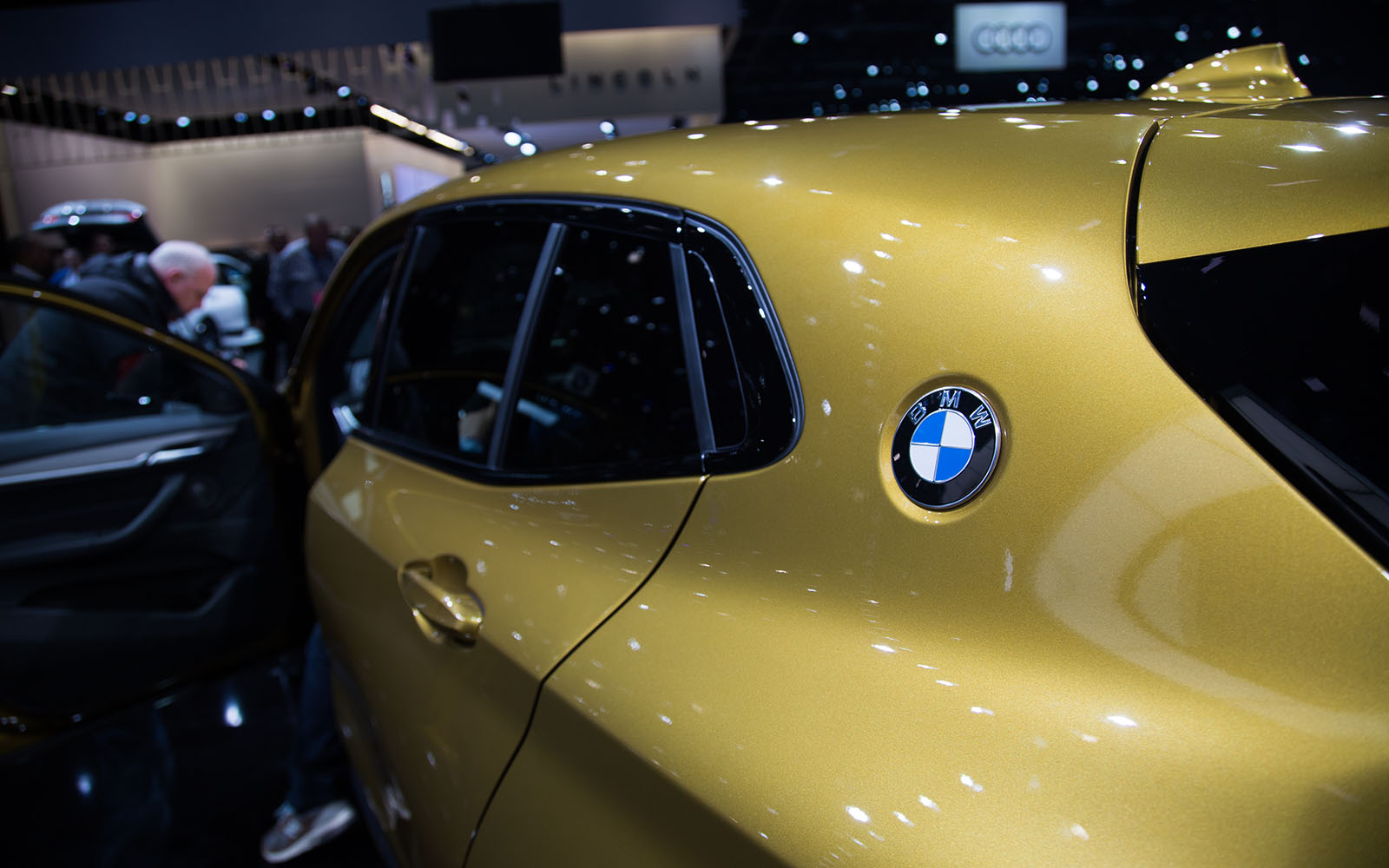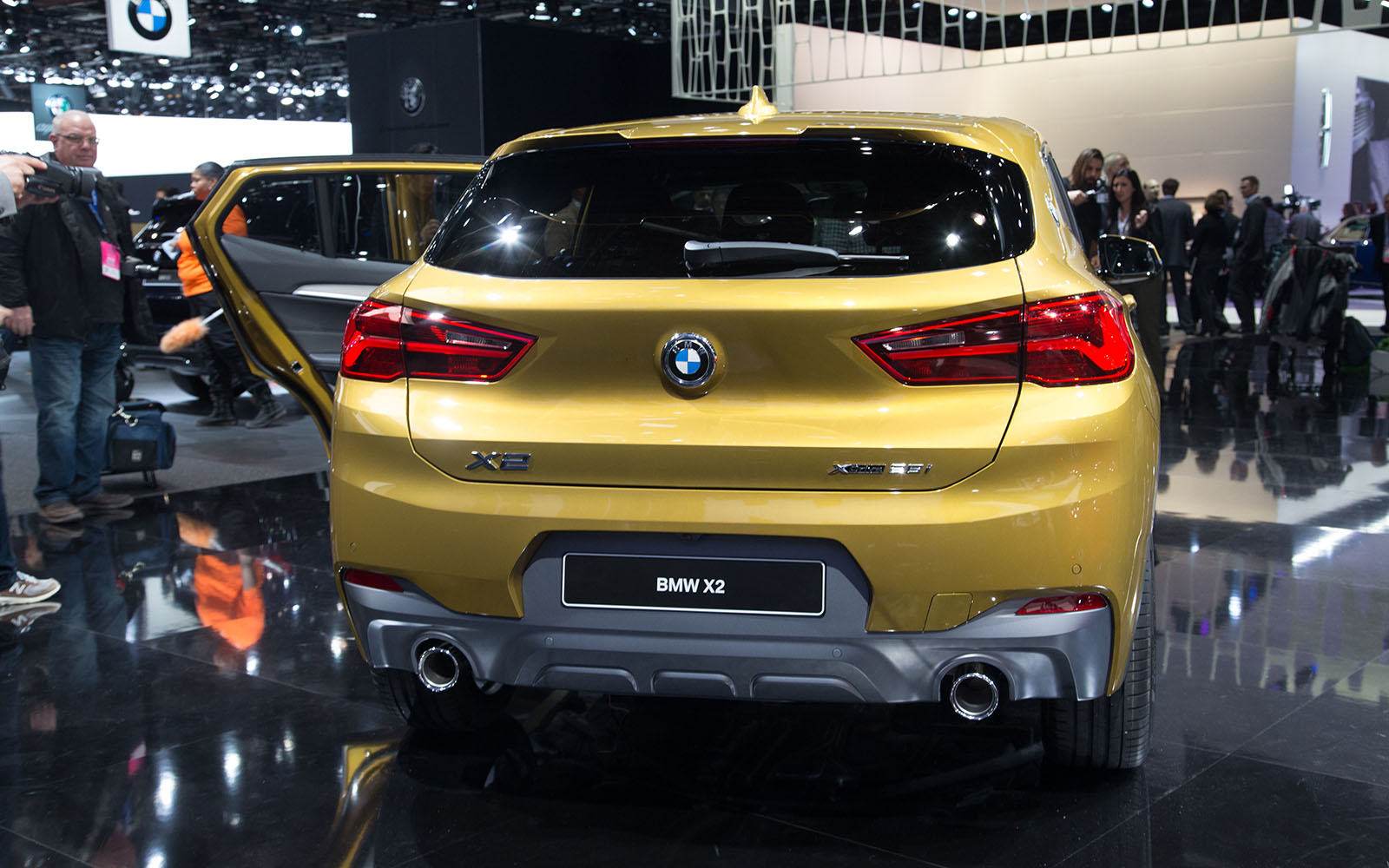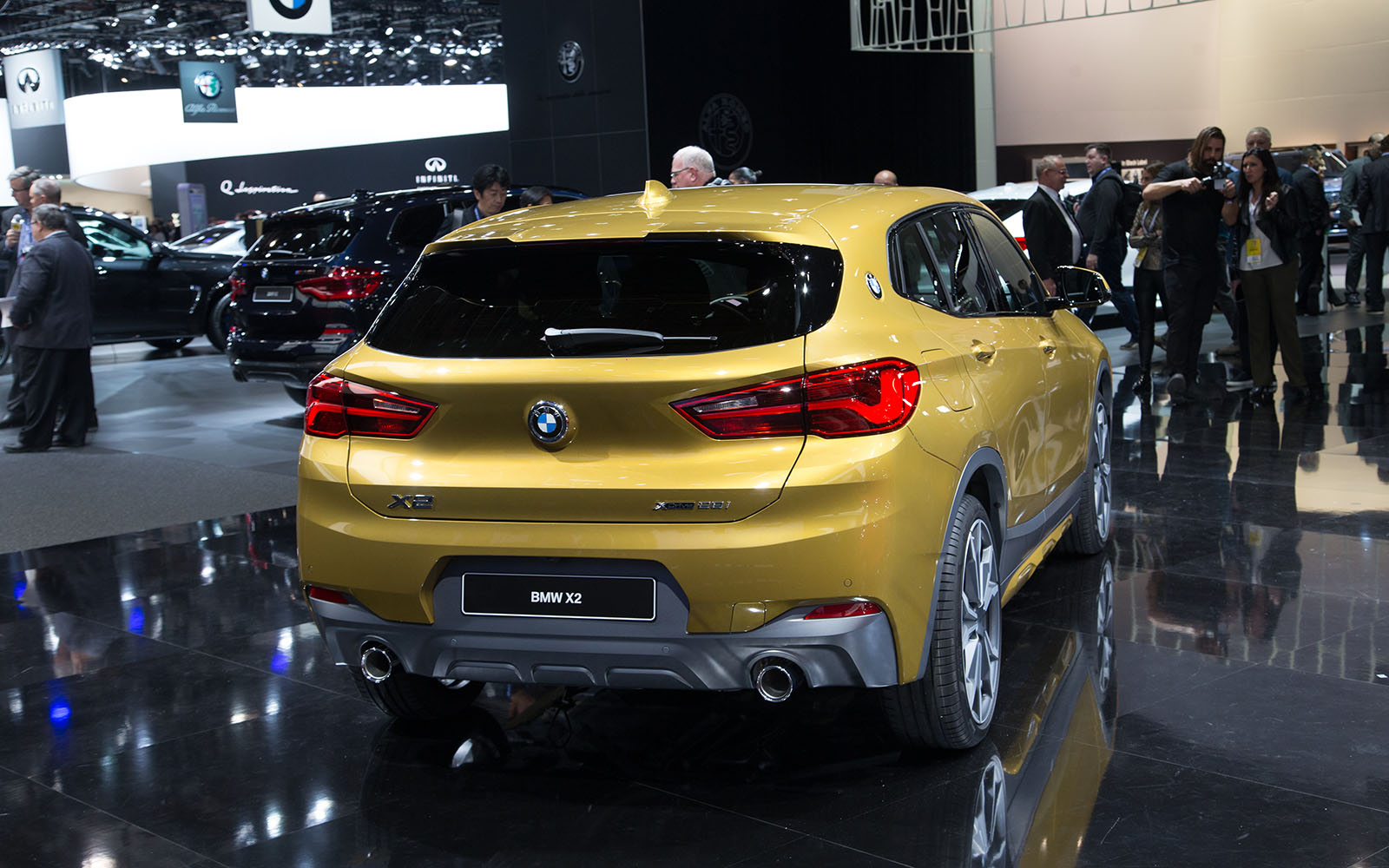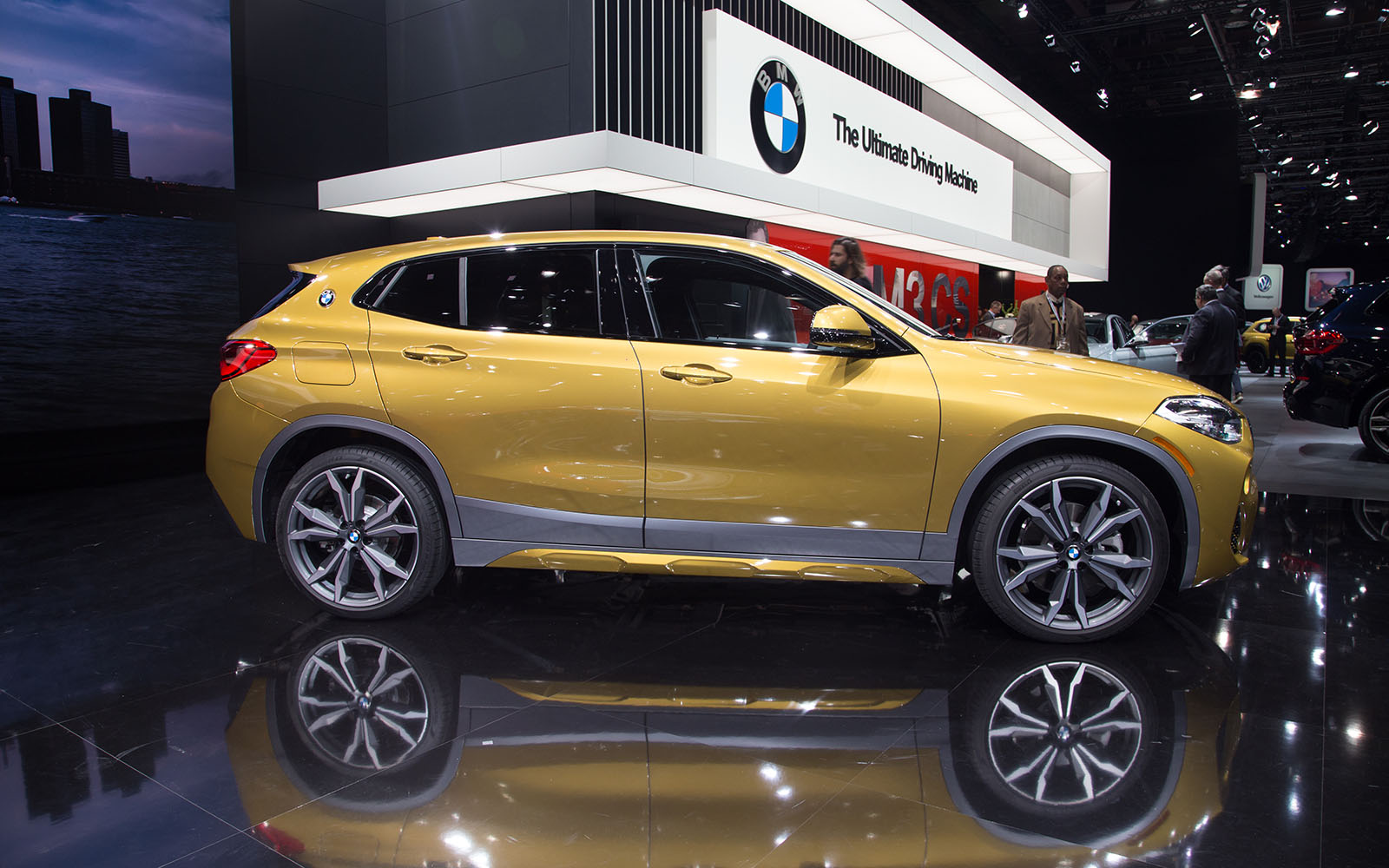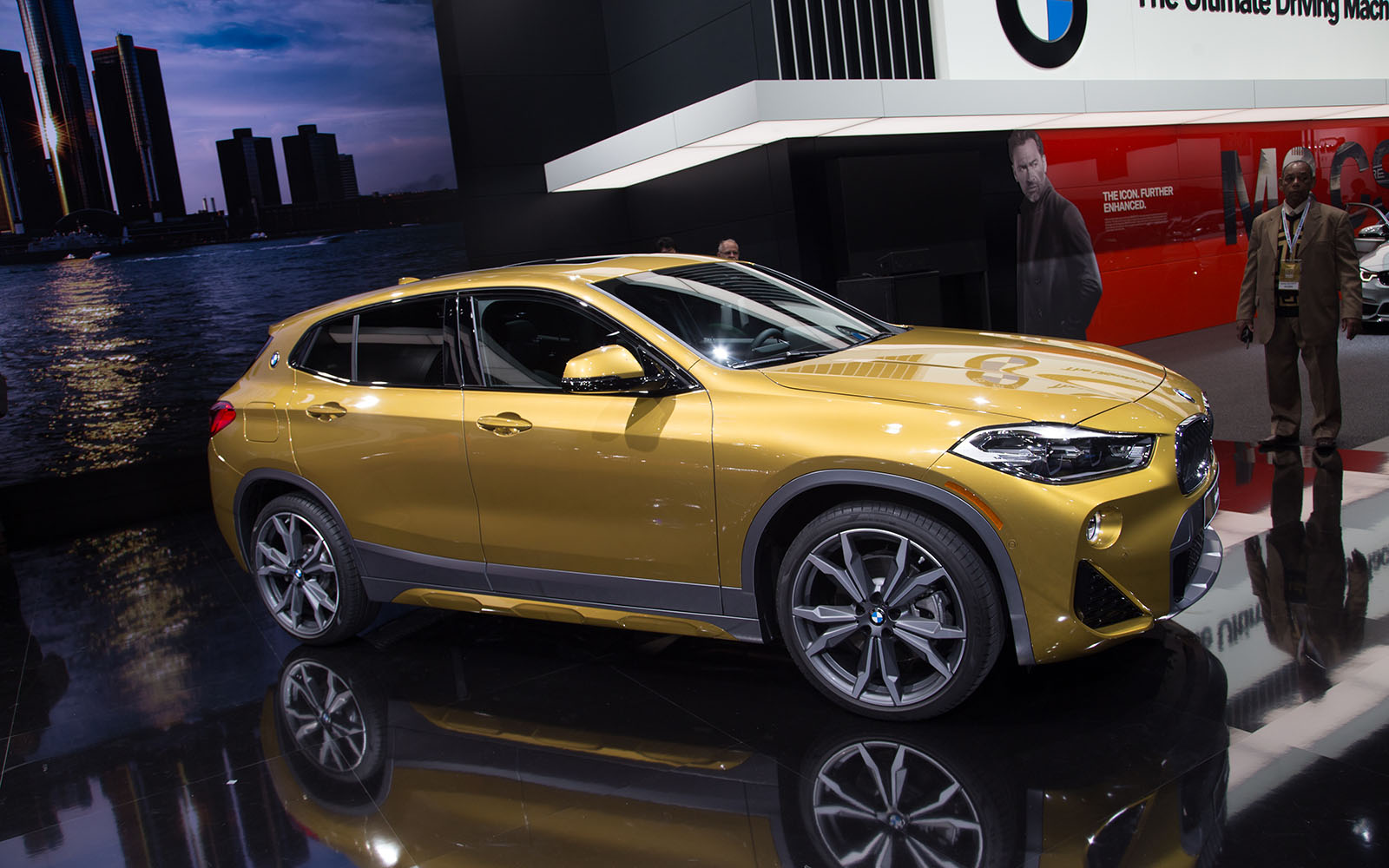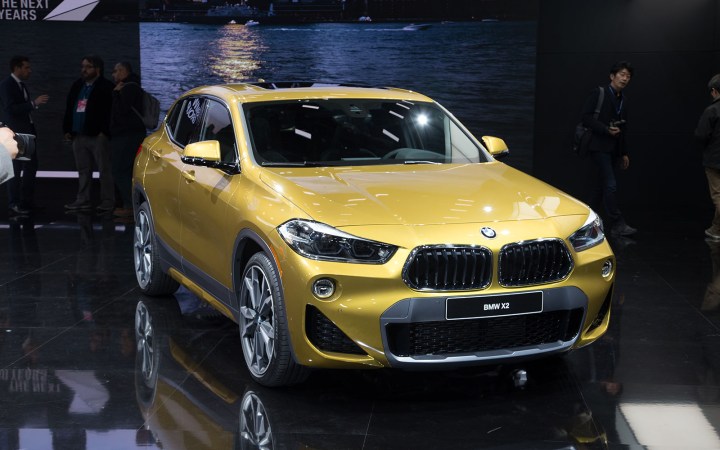
It’s the latest addition to BMW’s ever-growing portfolio of crossover SUVs. As you’ve probably guessed by now, because of the X2’s low number designation, it sits at the lower end of the lineup spectrum. Though it still sits above the BMW X1, the company’s entry-level crossover, as a sort of coupe-like SUV. Think of it as the mini-me version of the X4, which is a mini-me version of the X6.
With a more slick-back and low-slung roofline, the new X2 is much more unique and sportier than its more upright sibling, the X1. Specifically, the X2 is roughly 3.2 inches shorter in length than the X1 and 2.8 inches lower in height.
“The BMW X2 fuses the fast-moving forms of a coupe with the robust volumes of an X model,” sums up Thomas Sycha, head of design for BMW Compact Class. “It was important to us to make these apparently conflicting aspects of the BMW X2 and the car’s individual character something you experience from every angle and at first glance.”
Under the hood sits BMW’s latest TwinPower Turbo 2.0-liter inline-four for the X2 xDrive28i, the sole engine available. With a TwinScroll turbocharger, direct-injection, Valvetronic variable valve lift and Double-VANOS variable cam timing, the BMW X2 xDrive28i produces 228 horsepower and 258 pound-feet of torque.
With an eight-speed automatic sourced from ZF, featuring a new torque converter with reduced slip, which helps lower energy losses, 0-60 happens in just 6.3 seconds. Power is sent to all four wheels through BMW’s full-time xDrive all-wheel drive system to ensure the most stability and traction in inclement weather.
There’s also an optional M Sport package, which offers a sportier shift and performance profile for the transmission. When equipped, it’s called the BMW X2 M Sport X and further adds more aggressive styling cues, inspired by BMW’s motorsport rally cars. And it also comes with bespoke color options, only available on the M Sport X, and optional 20-inch double-spoke wheels with performance tires.
Pricing hasn’t been announced just yet, but BMW said the new 2018 X2 will hit showrooms sometime in spring of this year.
Editors' Recommendations
- 2023 BMW iX M60 is electric, spacious, and surprisingly quick
- Oppo Find X2 launches with whopping 3K-resolution screen
- BMW will launch an electric version of one of its most popular models in 2020
- BMW M bundles supercar-like performance into the X5 and the X6
- BMW teases hydrogen cars again with fuel cell X5 concept



